Fabrication and Performance Evaluation of a Directly Immersed Photovoltaic-Thermal Concentrator for Building Integration
Abstract
:1. Introduction
- Experimentally evaluate the performance of a façade-integrated CPVT system under real operating conditions (the experimental set-up was built according to the required dimensions: intermediate-size system).
- Evaluate a PV-cell cooling technique that has not been extensively studied.
- Provide valuable information about CPVT modules, prototypes of realistic dimensions and innovative building-integrated solar concentrators, contributing to the enrichment of the literature on CPVT technologies.
- Examine the performance of a system and its assembly that have been designed considering an appropriate control strategy for tracking solar altitude.
- Monitor the performance of the proposed system in terms of electrical and thermal energy production.
- Assessment of the qualitative performance of the façade-integrated system in terms of illumination and thermal envelope performances.
2. Design of the System
2.1. Optical Design
- To focus the incident solar irradiance onto the PV receiver, the optical efficiency and geometric concentration ratio must be maximised while minimising chromatic aberration and maintaining focal length inside the cavity.
- The acceptance angle has to be high enough so that the system is able to use low-accuracy (cheap) solar trackers. In this way, the PV cells are cooled down by direct immersion in the optical liquid medium. The free-form profile of the solid optical element was optimised by means of a genetic algorithm. The goal was to meet the requirements previously mentioned, considering PMMA casing and the two selected dielectric liquids.
2.2. Thermal and Electrical Design
- High light transmission so as to optimise electrical output (considering the effective spectrum of the PV cells).
- High absorption in the spectral range where the PV cells do not generate electricity in order to achieve effective heat dissipation, optimising thermal production.
- The necessary characteristics to act as a coolant:
- High specific heat and thermal conductivity to maximise thermal exchange.
- Low coefficient of expansion to prevent the increase in pressure in the hydraulic circuit when temperature increases.
- Appropriate range of operating temperatures, taking into account melting and boiling points as well as real operating conditions.
- High density and low viscosity so that the system can maximise heat-removal capacity and attain low pressure losses in pumping.
- The materials should be available and not expensive.
2.3. Mechanical and Control Design
3. Construction and Assembly
3.1. Module Fabrication
3.2. Fabrication of the Other Elements and Final Assembly
4. Experimental Investigation
5. Results
6. Conclusions
- There is a good agreement between experimental and numerical values regarding optical performance and thermal behaviour.
- The experimental optical efficiency is around 73% for the concentrator with DIW and about 76% for the one with IPA, close to the simulation results (76% for DIW and 81% for IPA).
- Module bending is a limiting factor because it can cause important efficiency losses.
- The thermal losses of both configurations range from 14 to 20 W °C−1m−2, indicating that the concentrator is not optimal from a thermal point of view (improvement is needed). The results also agree with the simulations, which showed losses ranging from 13 to 18 W °C−1m−2.
- Regarding electrical performance, the fill factors for IPA and DIW are as follows: 62.8% and 61.7%, respectively. The fill-factor reduction is mainly attributed to an increased series resistance due to the interconnection of the PV cells and the micro-short circuits caused by the laser-cutting process.
- Sun-tracking is a critical factor in developing a successful concentrating solar system.
- There are striking differences between the testing unit without solar concentration and the one with solar concentration. The illuminance in the testing unit with the concentrator is about four times lower than that observed in the reference testing unit (configured with maximum shading for lighting control). Additionally, the maximum heat fluxes through the lateral walls and the ceiling and the interior temperature in the concentrator-equipped unit are reduced by approximately 50%.
Author Contributions
Funding
Institutional Review Board Statement
Informed Consent Statement
Data Availability Statement
Conflicts of Interest
References
- ECEEE. Available online: https://www.eceee.org/all-news/news/eu-to-start-measuring-embodied-carbon-emissions-from-buildings/ (accessed on 26 June 2024).
- IEA. Available online: https://www.iea.org/reports/world-energy-outlook-2019 (accessed on 5 February 2021).
- EPB. Available online: https://epb.center/epb-standards/energy-performance-buildings-directive-epbd/ (accessed on 26 June 2024).
- EEA. Available online: https://www.eea.europa.eu/highlights/eu-achieves-20-20-20 (accessed on 26 June 2024).
- Chemisana, D. Building Integrated Concentrating Photovoltaics: A review, Renewable and Sustainable. Energy Rev. 2011, 15, 603–611. [Google Scholar]
- Lamnatou, C.; Chemisana, D. Photovoltaic/thermal (PVT) systems: A review with emphasis on environmental issues. Renew. Energy 2017, 105, 270–287. [Google Scholar] [CrossRef]
- Lamnatou, C.; Chemisana, D. Concentrating solar systems: Life Cycle Assessment (LCA) and environmental issues. Renew. Sustain. Energy Rev. 2017, 78, 916–932. [Google Scholar] [CrossRef]
- Peng, D.; Fang, Z.; Yu, X.; Huang, Q. Characteristic analysis of patterned photovoltaic modules for building integration. Energy Convers. Manag. 2023, 276, 116524. [Google Scholar] [CrossRef]
- Vassiliades, C.; Agathokleous, R.; Barone, G.; Forzano, C.; Giuzio, G.F.; Palombo, A.; Buonomano, A.; Kalogirou, S. Building integration of active solar energy systems: A review of geometrical and architectural characteristics. Renew. Sustain. Energy Rev. 2022, 164, 112482. [Google Scholar] [CrossRef]
- Al-Waeli, A.H.A.; Sopian, K.; Kazem, H.A.; Chaichan, M.T. Photovoltaic/Thermal (PV/T) systems: Status and future prospects. Renew. Sustain. Energy Rev. 2017, 77, 109–130. [Google Scholar] [CrossRef]
- Kalogirou, S.A.; Tripanagnostopoulos, Y. Hybrid PV/T solar systems for domestic hot water and electricity production. Energy Convers. Manag. 2006, 47, 3368–3382. [Google Scholar] [CrossRef]
- Araki, K.; Uozumi, H.; Yamaguchi, M. A simple passive cooling structure and its heat analysis for 500 X concentrator PV module. In Proceedings of the Conference Record of the Twenty-Ninth IEEE Photovoltaic Specialists Conference, New Orleans, LA, USA, 19–24 May 2002; pp. 1568–1571. [Google Scholar]
- Fork, D.K.; Horne, S.J. Passively Cooled Solar Concentrating Photovoltaic Device. U.S. Patent US2007/0256724 A1, 8 November 2007. [Google Scholar]
- Coventry, J.S. Performance of a concentrating photovoltaic/thermal solar collector. Sol. Energy 2005, 78, 211–222. [Google Scholar] [CrossRef]
- Liu, L.; Zhu, L.; Wang, Y.; Huang, Q.; Sun, Y.; Yin, Z. Heat dissipation performance of silicon solar cells by direct dielectric liquid immersion under intensified illuminations. Sol. Energy 2011, 85, 922–930. [Google Scholar] [CrossRef]
- Akrouch, M.A.; Chahine, K.; Faraj, J.; Hachem, F.; Castelain, C.; Khaled, M. Advancements in cooling techniques for enhanced efficiency of solar photovoltaic panels: A detailed comprehensive review and innovative classification. Energy Built. Environ. 2023; in press. [Google Scholar] [CrossRef]
- Abrahamyan, Y.A.; Serago, V.I.; Aroutiounian, V.M.; Anisimova, I.D.; Stafeev, V.I.; Karamian, G.G.; Martoyan, G.A.; Mouradyan, A.A. The efficiency of solar cells immersed in liquid dielectrics. Sol. Energy Mater. Sol. Cells 2002, 73, 367–375. [Google Scholar] [CrossRef]
- Han, X.; Wang, Y.; Zhu, L. Electrical and thermal performance of silicon concentrator solar cells immersed in dielectric liquids. Appl. Energy 2011, 88, 4481–4489. [Google Scholar] [CrossRef]
- Abdelrazik, A.S. The potential of liquid-based spectrally-selective optical filtration and its use in hybrid photovoltaic/thermal solar systems. Sol. Energy 2023, 249, 569–605. [Google Scholar] [CrossRef]
- Chemisana, D.; Fernandez, E.F.; Riverola, A.; Moreno, A. Fluid-based spectrally selective filters for direct immersed PVT solar systems in building applications. Renew. Energy 2018, 123, 263–272. [Google Scholar] [CrossRef]
- Huang, G.; Wang, K.; Markides, C.N. Efficiency limits of concentrating spectral-splitting hybrid photovoltaic-thermal (PV-T) solar collectors and systems. Light Sci. Appl. 2021, 10, 28. [Google Scholar] [CrossRef]
- Xin, G.; Wang, Y.; Sun, Y.; Huang, Q.; Zhu, L. Experimental study of liquid-immersion III–V multi-junction solar cells with dimethyl silicon oil under high concentrations. Energy Convers. Manag. 2015, 94, 169–177. [Google Scholar] [CrossRef]
- Wang, Y.; Fang, Z.; Zhu, L.; Huang, Q.; Zhang, Y.; Zhang, Z. The performance of silicon solar cells operated in liquids. Appl. Energy 2009, 86, 1037–1042. [Google Scholar] [CrossRef]
- Zhu, L.; Wang, Y.; Fang, Z.; Sun, Y.; Huang, Q. An effective heat dissipation method for densely packed solar cell under high concentrations. Sol. Energy Mater. Sol. Cells 2010, 94, 133–140. [Google Scholar] [CrossRef]
- Zhu, L.; Boehm, R.F.; Wang, Y.; Halford, C.; Sun, Y. Water immersion cooling of PV cells in a high concentration system. Sol. Energy Mater. Sol. Cells 2011, 95, 538–545. [Google Scholar] [CrossRef]
- Otanicar, T.; Dale, J.; Orosz, M.; Brekke, N.; DeJarnette, D.; Tunkara, E.; Roberts, K.; Harikumar, P. Experimental evaluation of a prototype hybrid CPV/T system utilizing a nanoparticle fluid absorber at elevated temperatures. Appl. Energy 2018, 228, 1531–1539. [Google Scholar] [CrossRef]
- Mojumder, J.C.; Aminossadati, S.M.; Leonardi, C.R. Numerical analysis of a hybrid SF-CPV/T collector using spectral-filter nanofluids suitable for a high operating temperature range. Renew. Energy 2024, 230, 120735. [Google Scholar] [CrossRef]
- Han, X.; Wang, Y.; Zhu, L.; Xiang, H.; Zhang, H. Reliability assessment of silicone coated silicon concentrator solar cells by accelerated aging tests for immersing in de-ionized water. Sol. Energy 2011, 85, 2781–2788. [Google Scholar] [CrossRef]
- Ju, X.; Xu, C.; Han, X.; Du, X.; Wei, G.; Yang, Y. A review of the concentrated photovoltaic/thermal (CPVT) hybrid solar systems based on the spectral beam splitting technology. Appl. Energy 2017, 187, 534–563. [Google Scholar] [CrossRef]
- Looser, R.; Vivar, M.; Everett, V. Spectral characterisation and long-term performance analysis of various commercial Heat Transfer Fluids (HTF) as Direct-Absorption Filters for CPV-T beam-splitting applications. Appl. Energy 2014, 113, 1496–1511. [Google Scholar] [CrossRef]
- Vivar, M.; Everett, V. A review of optical and thermal transfer fluids used for optical adaptation or beam-splitting in concentrating solar systems. Prog. Photovolt. Res. Appl. 2014, 22, 612–633. [Google Scholar] [CrossRef]
- Fikri, M.A.; Samykano, M.; Pandey, A.K.; Kadirgama, K.; Kumar, R.R.; Selvaraj, J.; Abd Rahim, N.; Tyagi, V.V.; Sharma, K.; Saidur, R. Recent progresses and challenges in cooling techniques of concentrated photovoltaic thermal system: A review with special treatment on phase change materials (PCMs) based cooling. Sol. Energy Mater. Sol. Cells 2022, 241, 111739. [Google Scholar] [CrossRef]
- Jacob, J.; Pandey, A.K.; Abd Rahim, N.; Selvaraj, J.; Samykano, M.; Saidur, R.; Tyagi, V.V. Concentrated Photovoltaic Thermal (CPVT) systems: Recent advancements in clean energy applications, thermal management and storage. J. Energy Storage 2022, 45, 103369. [Google Scholar] [CrossRef]
- Papis-Frączek, K.; Sornek, K. A Review on Heat Extraction Devices for CPVT Systems with Active Liquid Cooling. Energies 2022, 15, 6123. [Google Scholar] [CrossRef]
- Mariam, E.; Ramasubramanian, B.; Sumedha Reddy, V.; Dalapati, G.K.; Ghosh, S.; Pa, T.S.; Chakrabortty, S.; Motapothula, M.R.; Kumar, A.; Ramakrishna, S.; et al. Emerging trends in cooling technologies for photovoltaic systems. Renew. Sustain. Energy Rev. 2024, 192, 114203. [Google Scholar] [CrossRef]
- Riverola, A.; Moreno, A.; Chemisana, D. Performance of a dielectric PVT concentrator for building-façade integration. Opt. Express 2018, 26, A892. [Google Scholar] [CrossRef]
- Moreno, A.; Riverola, A.; Chemisana, D. Energetic simulation of a dielectric photovoltaic-thermal concentrator. Sol. Energy 2018, 169, 374–385. [Google Scholar] [CrossRef]
- Shanks, K.; Senthilarasu, S.; Mallick, T.K. Optics for concentrating photovoltaics: Trends, limits and opportunities for materials and design. Renew. Sustain. Energy Rev. 2016, 60, 394–407. [Google Scholar] [CrossRef]
- Sarmah, N.; Mallick, T.K. Design, fabrication and outdoor performance analysis of a low concentrating photovoltaic system. Sol. Energy 2015, 112, 361–372. [Google Scholar] [CrossRef]
- Tripanagnostopoulos, Y.; Chemisana, D.; Rosell, J.I.; Souliotis, M. New CPV Systems with Static Reflectors. AIP Conf. Proc. 2010, 1277, 199–202. [Google Scholar]
- ASTM G173-03; Standard Tables for Reference Solar Spectral Irradiances: Direct Normal and Hemispherical on 37° Tilted Surface. Available online: https://www.astm.org/g0173-03r20.html (accessed on 3 March 2022).
- SAS Silicon Cells. SR6SKUN 156.75 x 156.75 Monocrystalline Solar Cell 5 Bus Bars 2017. Available online: https://www.saswafer.com/ (accessed on 16 April 2017).
- Eiternick, S.; Kaufmann, K.; Schneider, J.; Turek, M. Loss Analysis for Laser Separated Solar Cells. Energy Procedia 2014, 55, 326–330. [Google Scholar] [CrossRef]
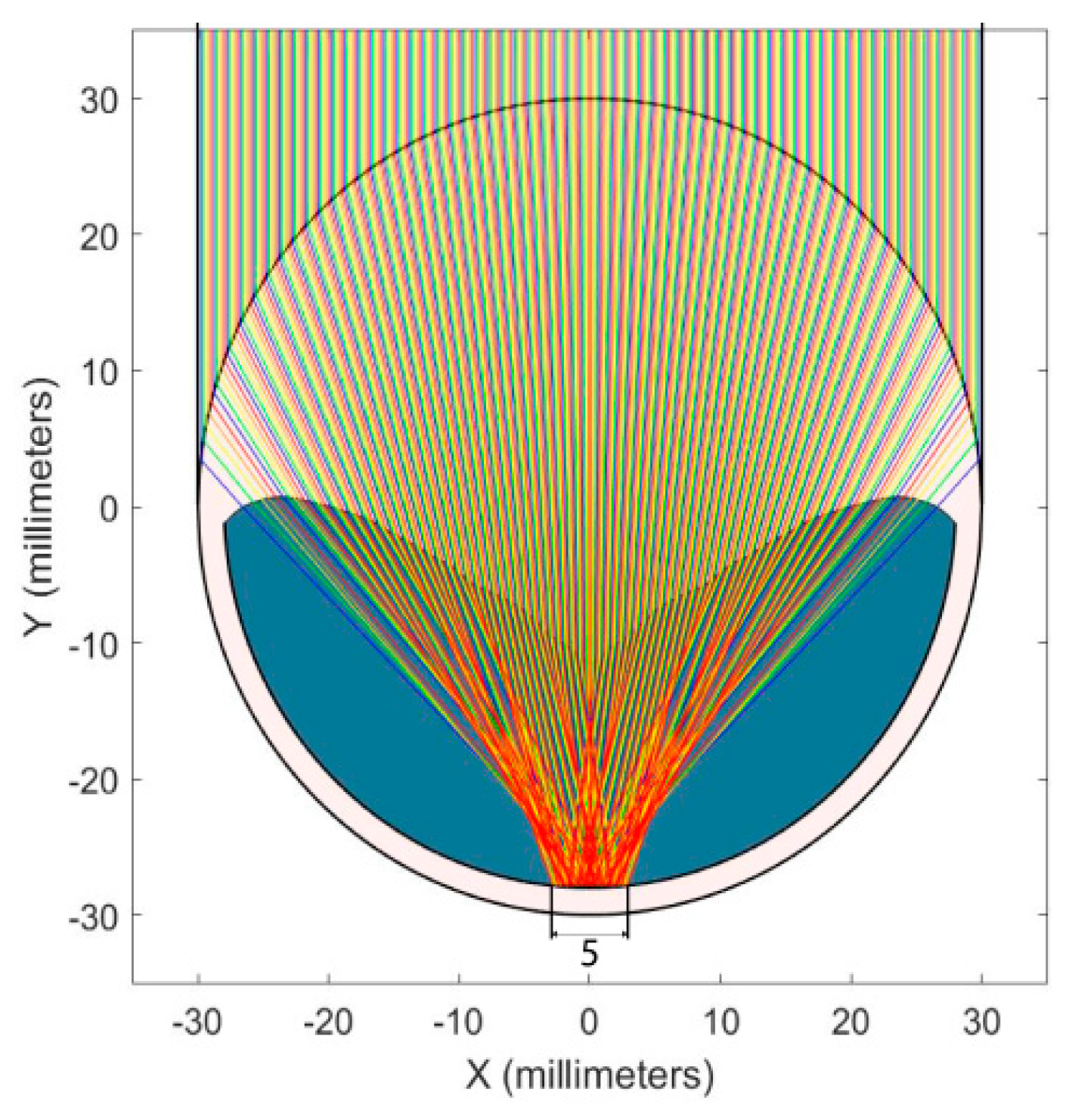
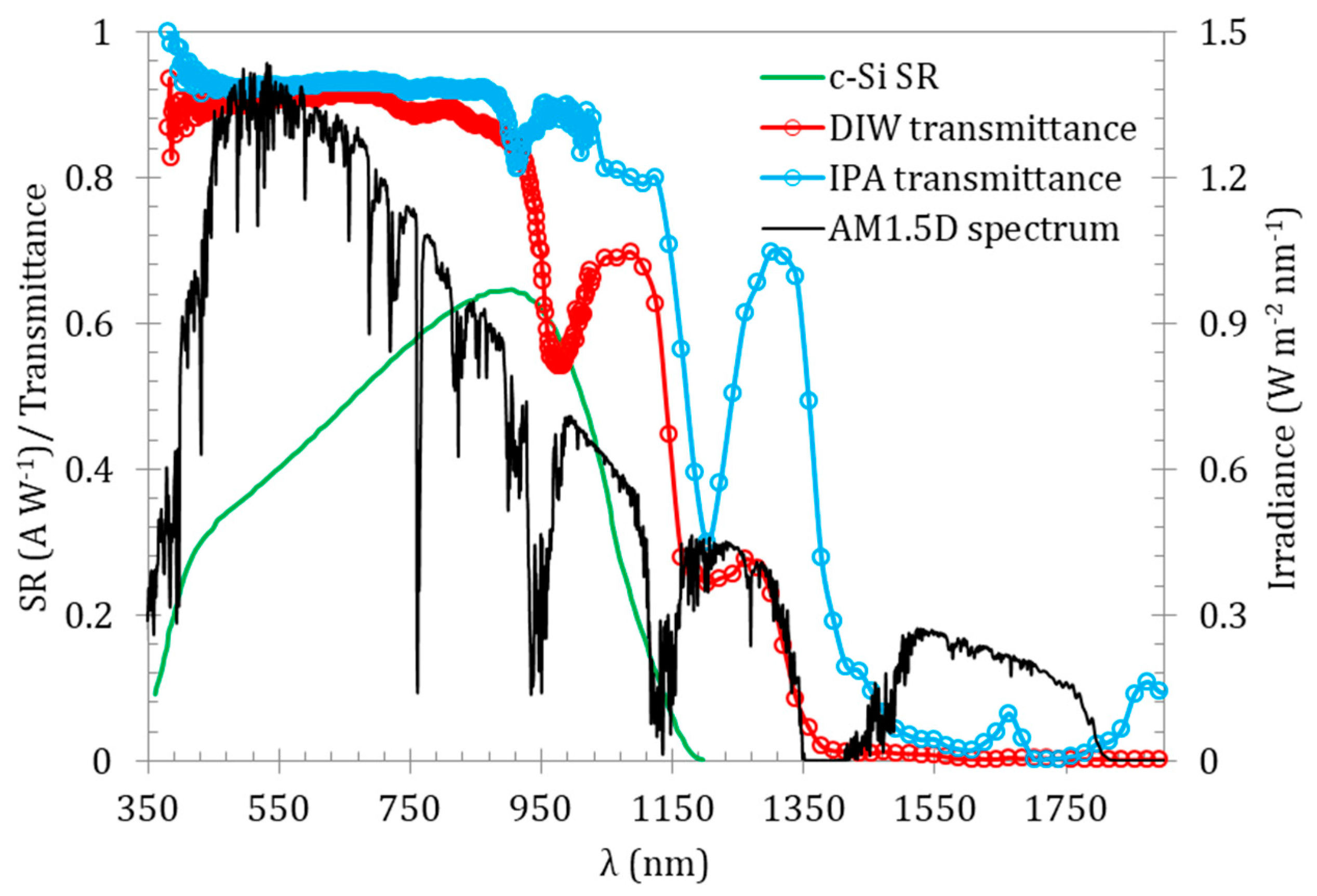


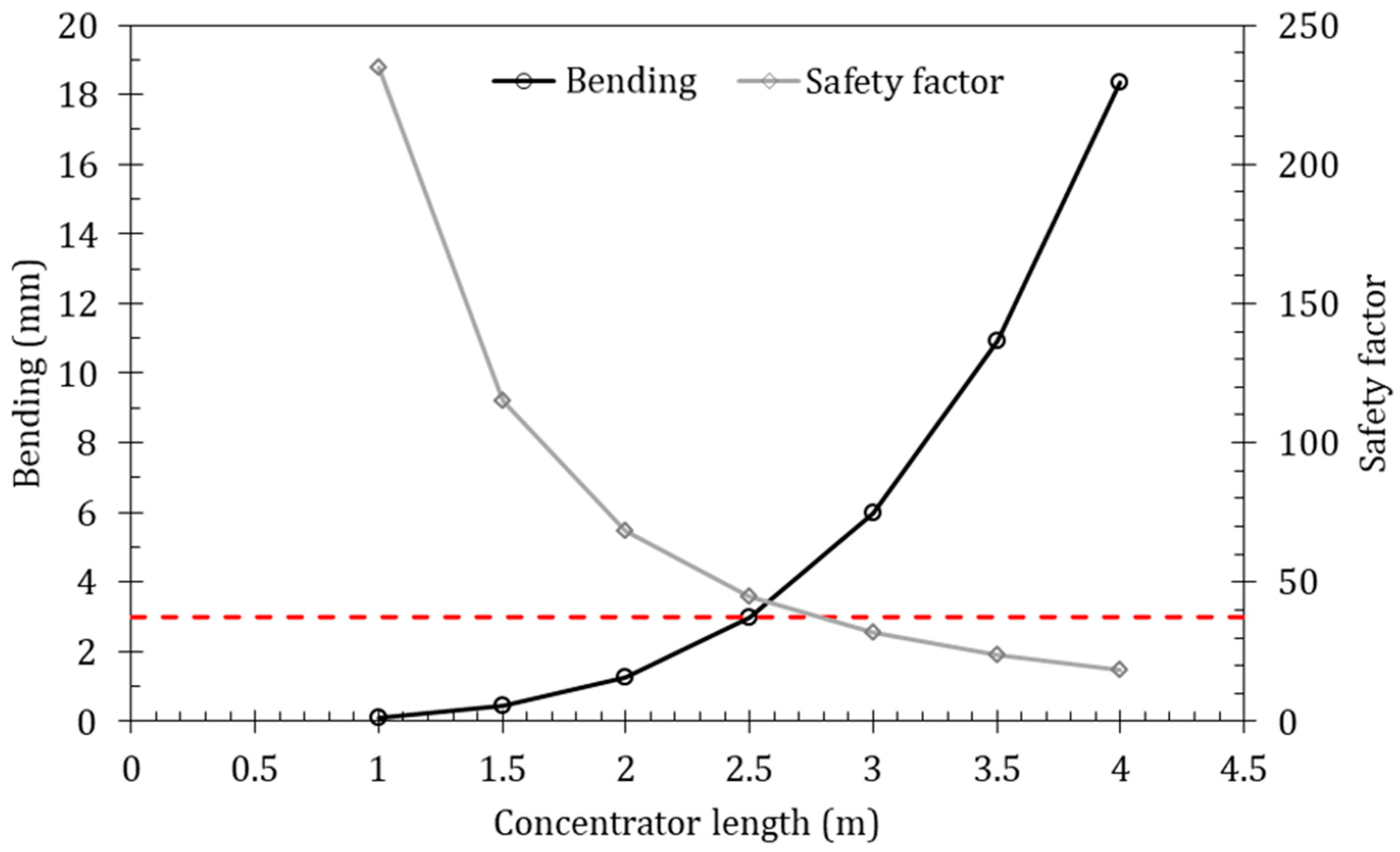
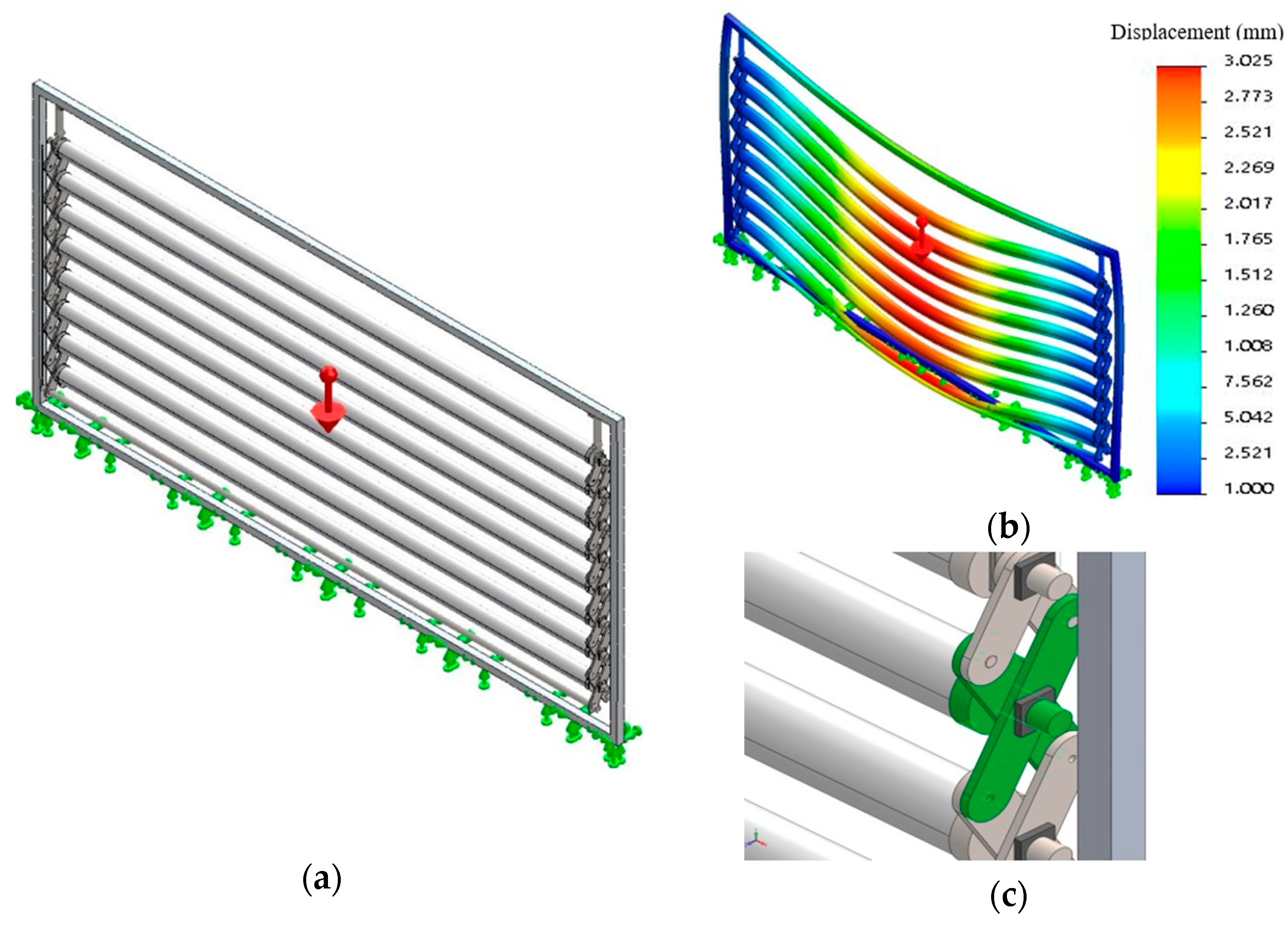
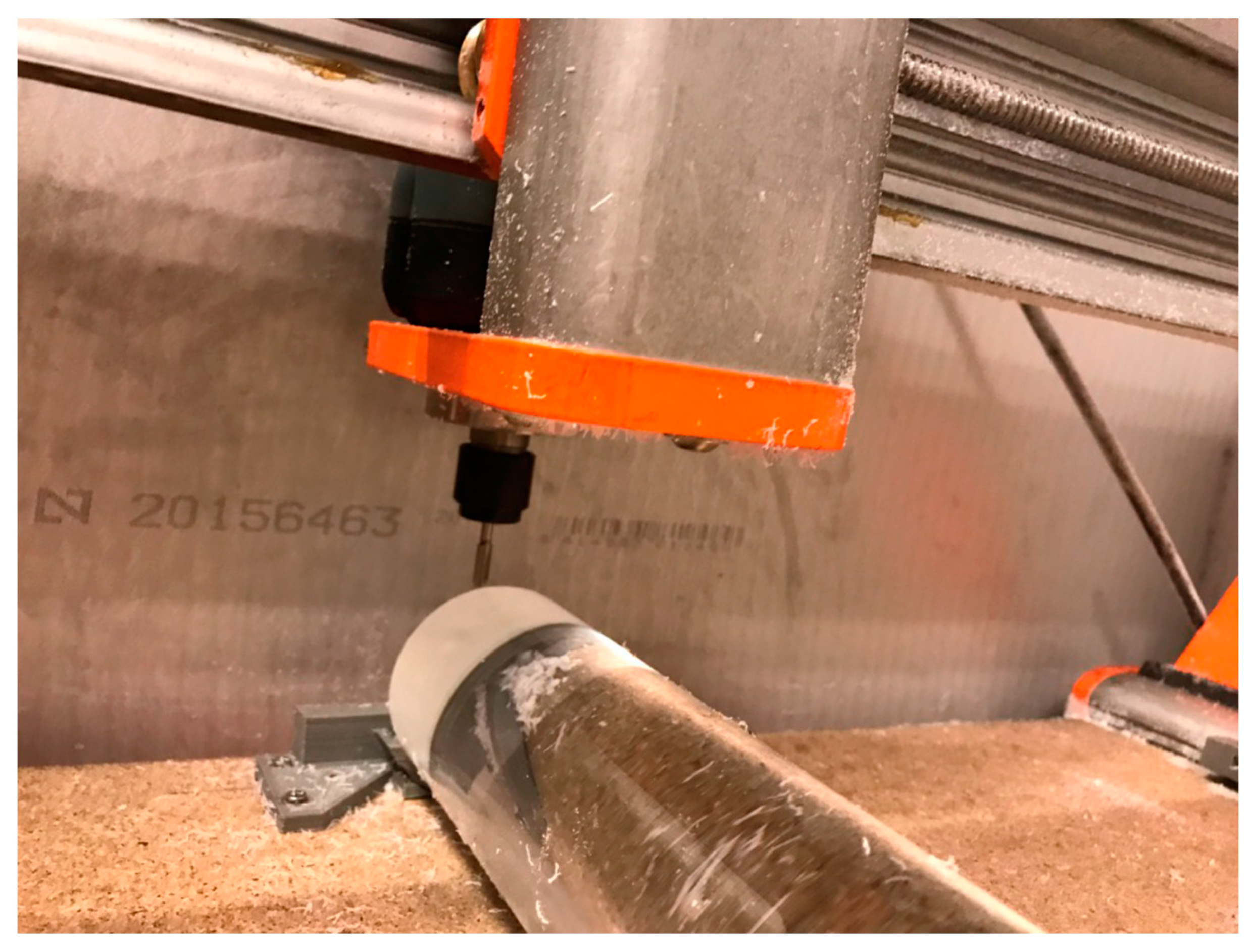
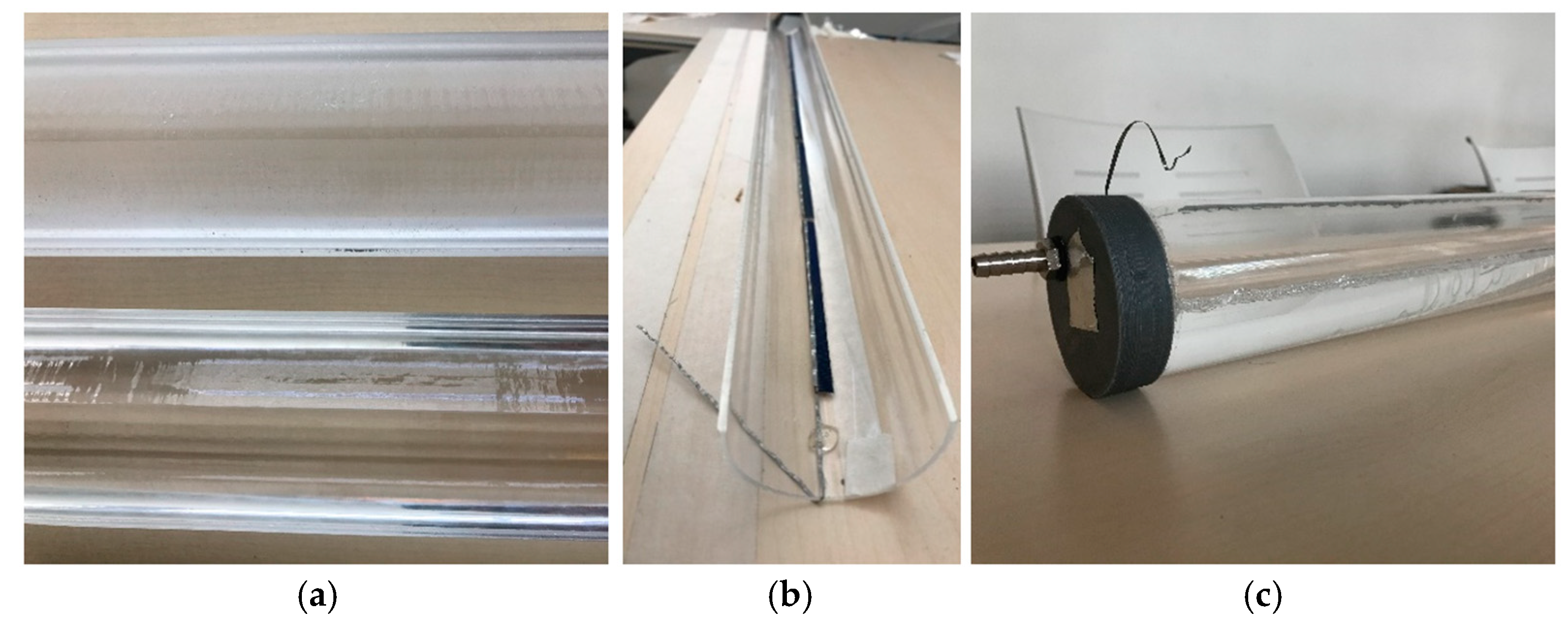

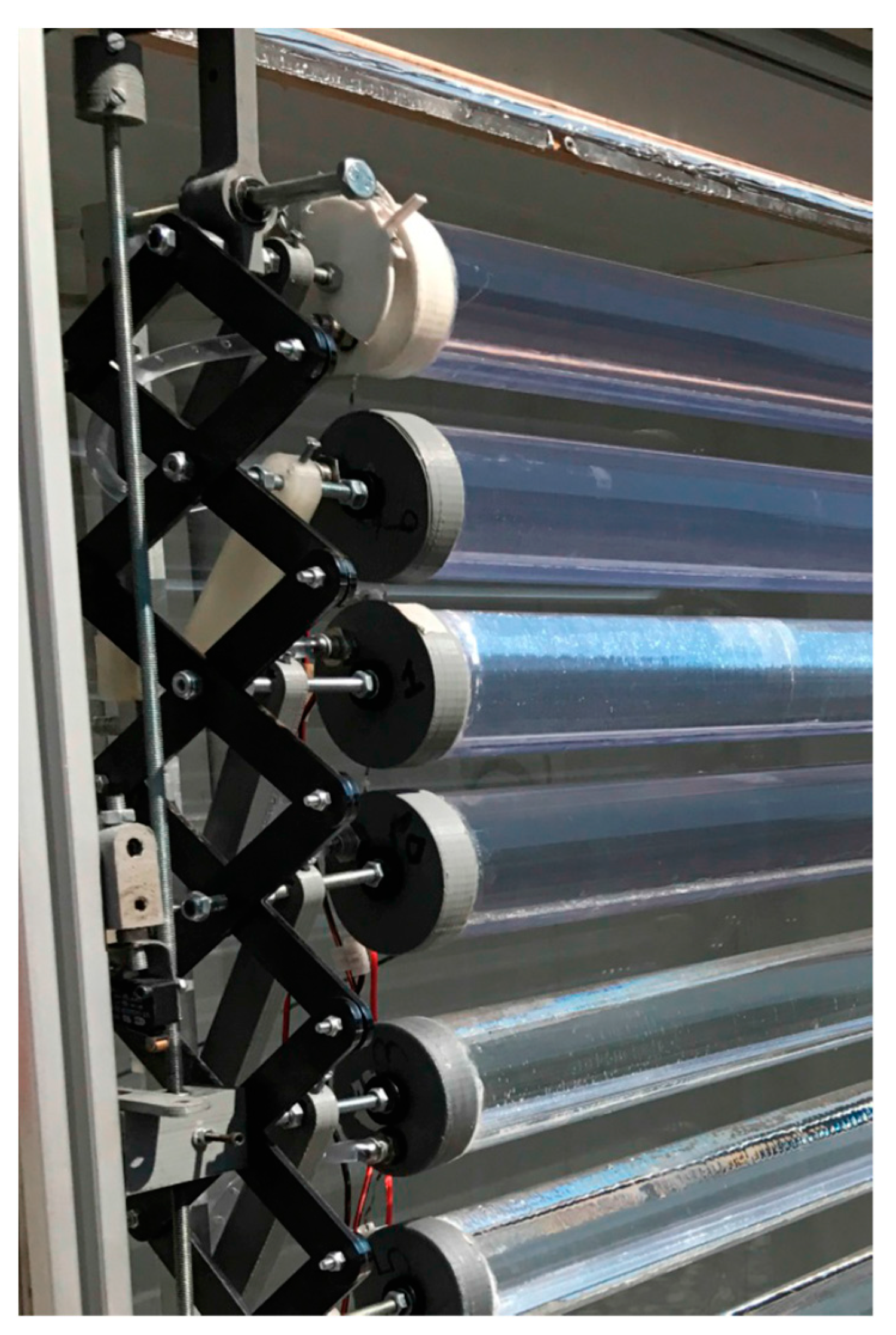
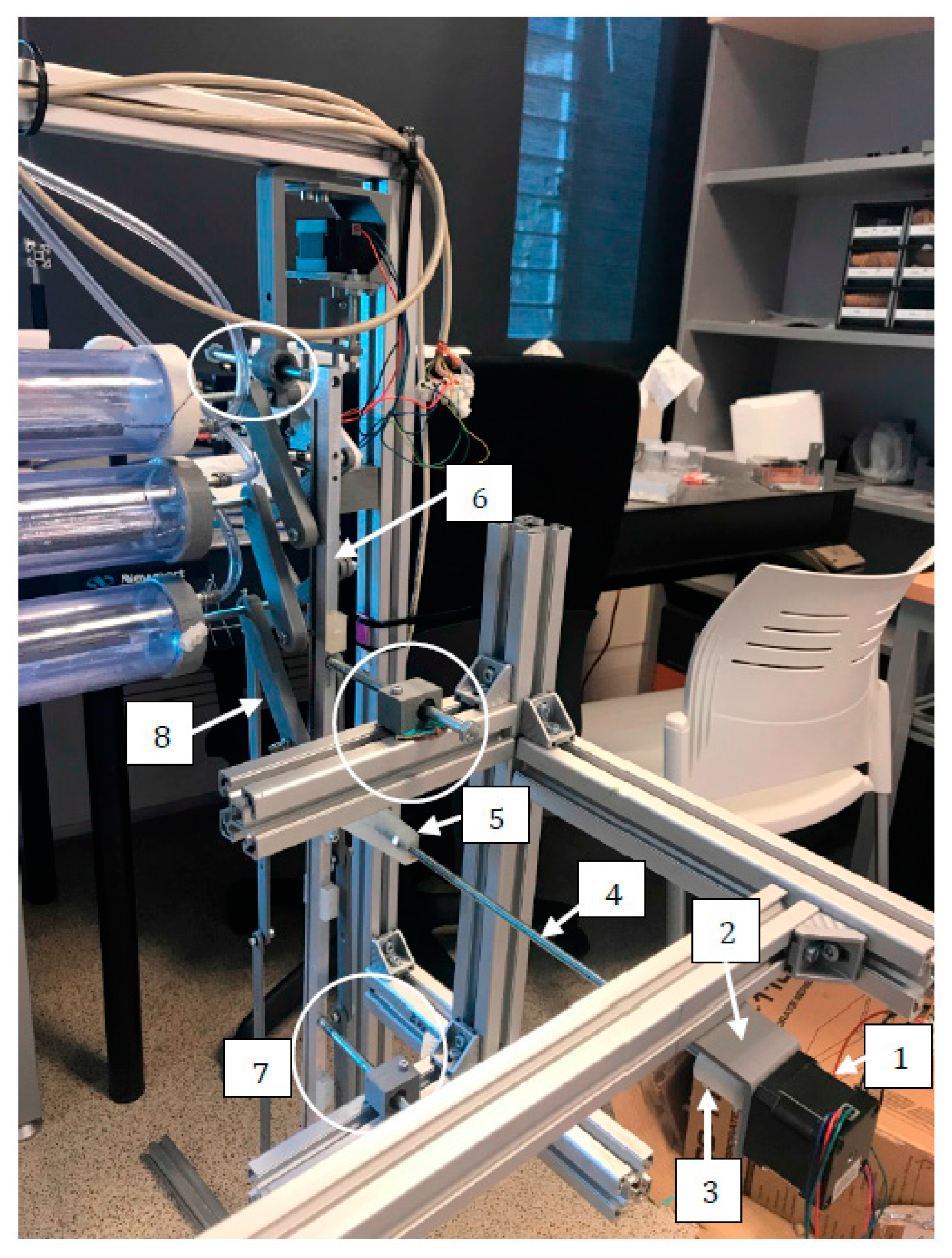
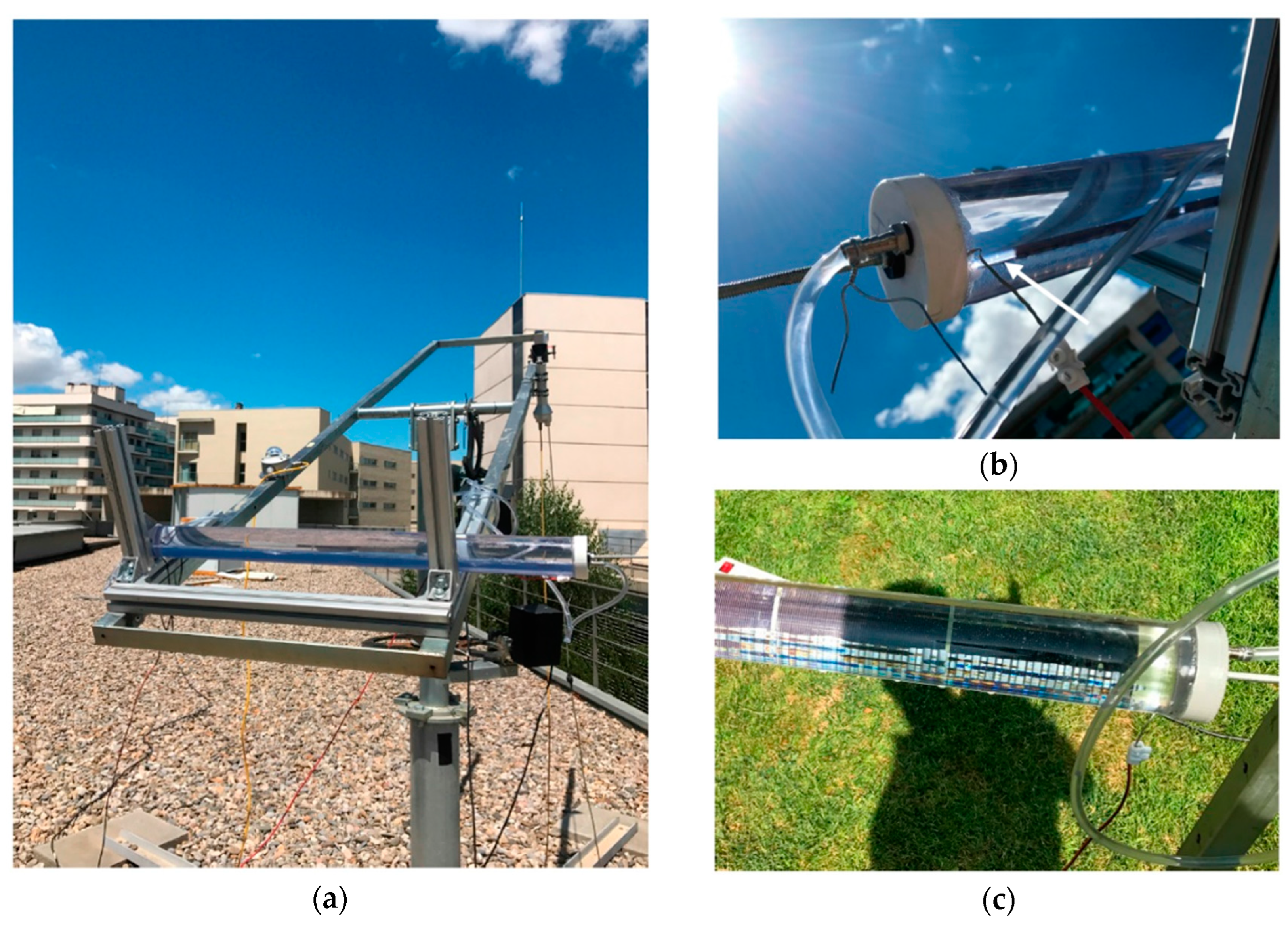
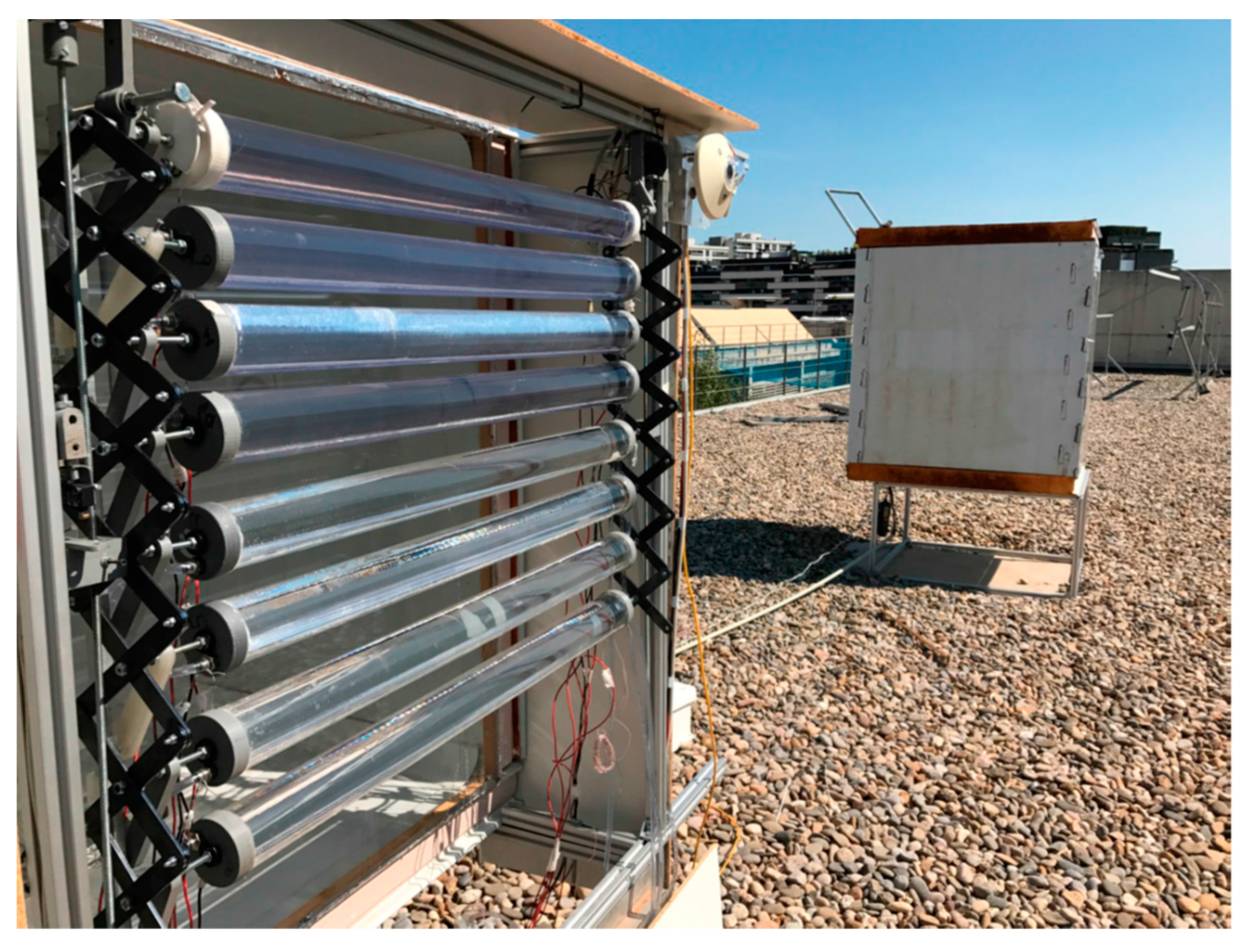
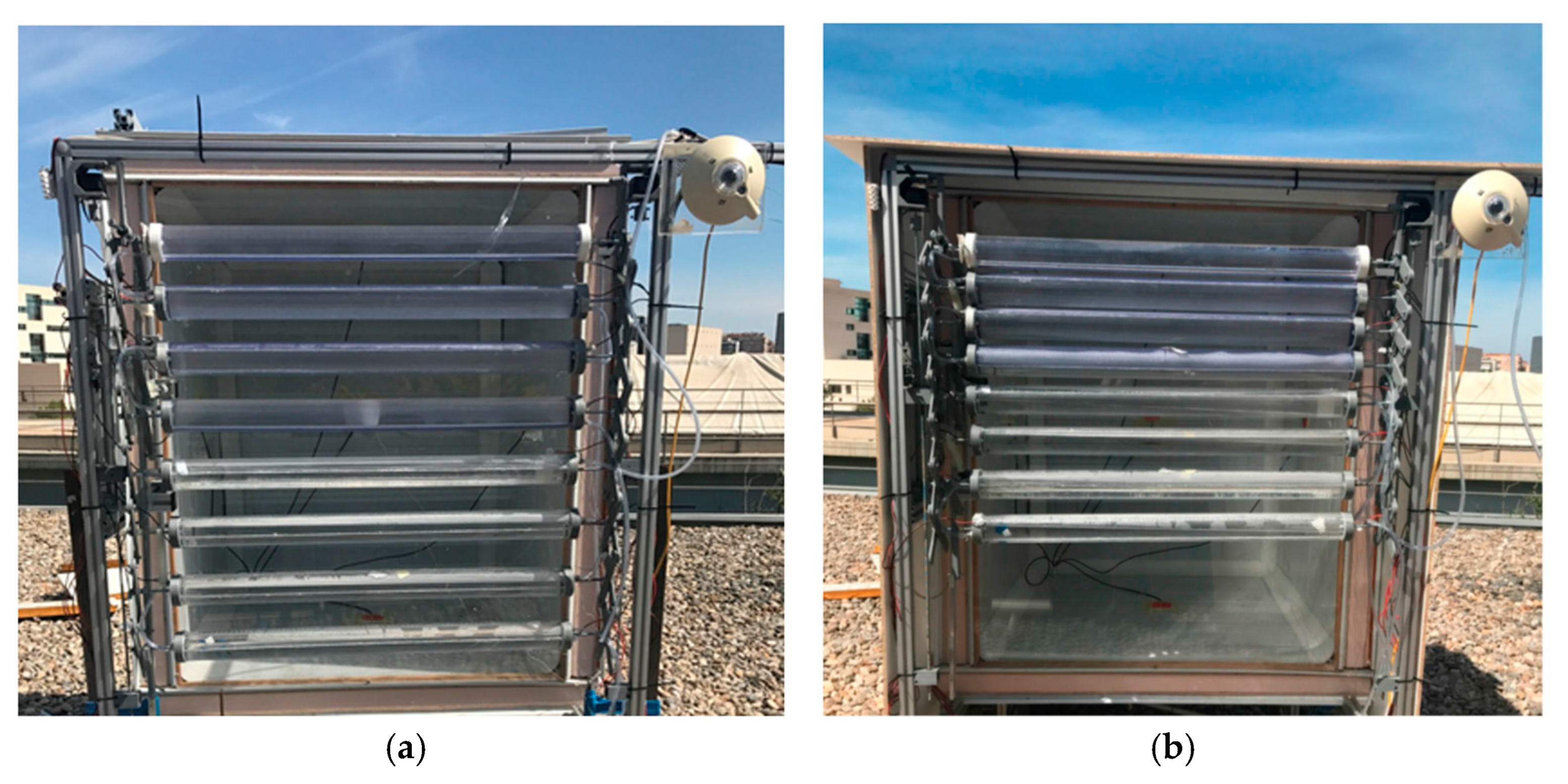
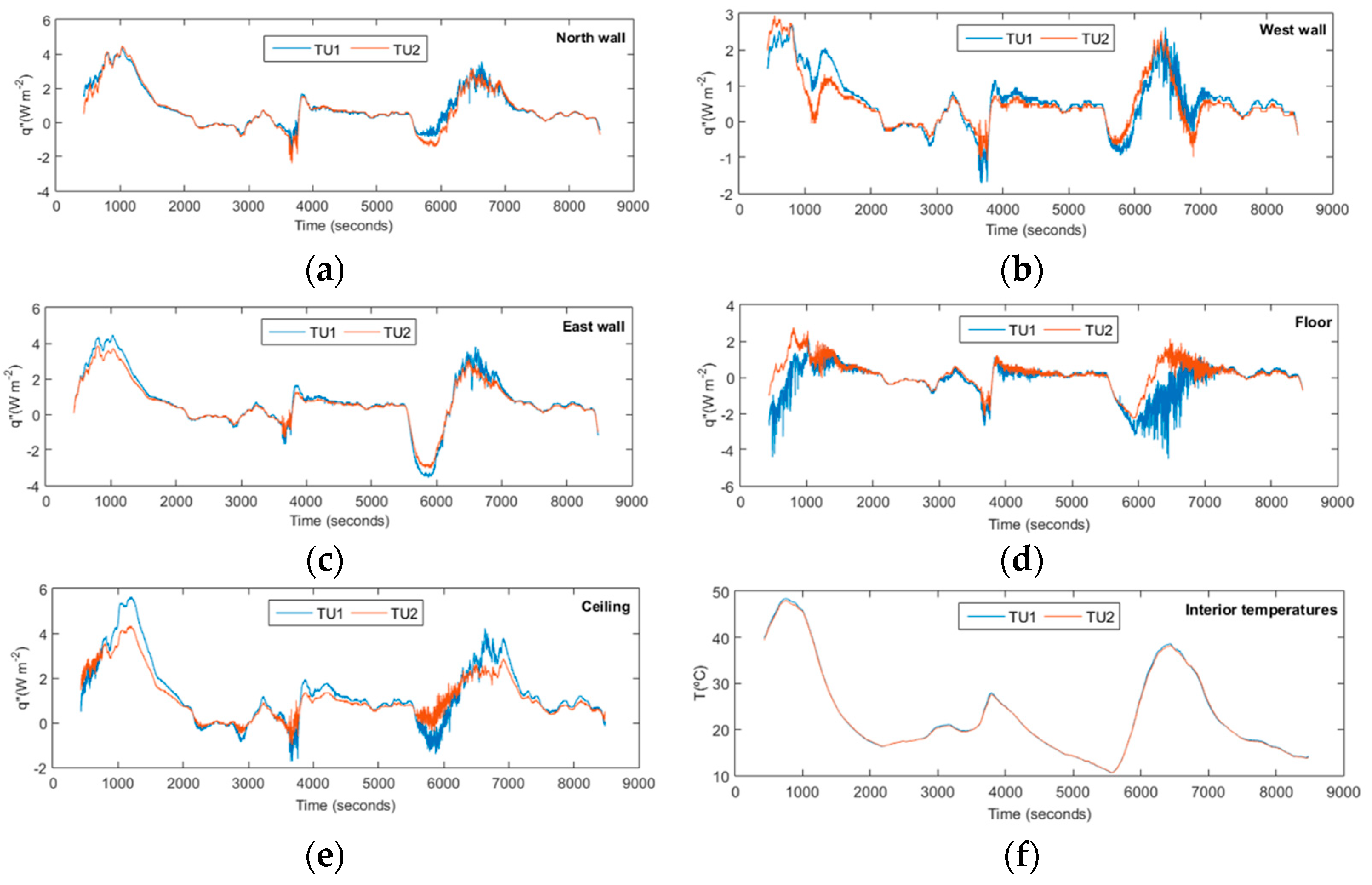

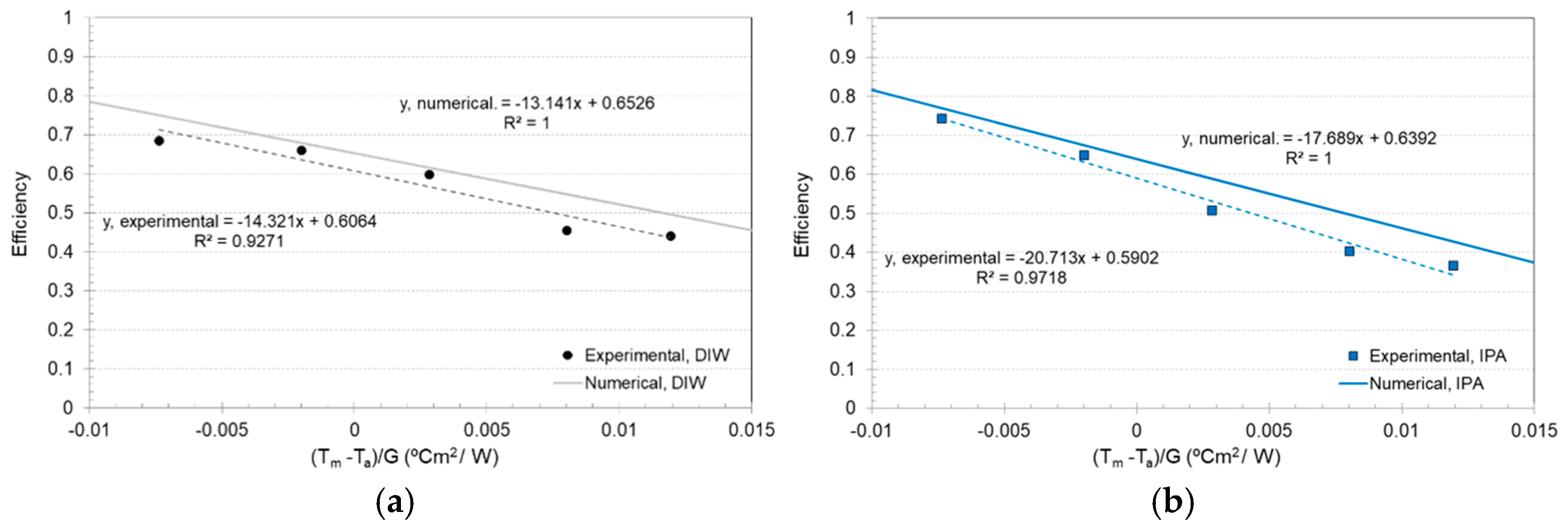

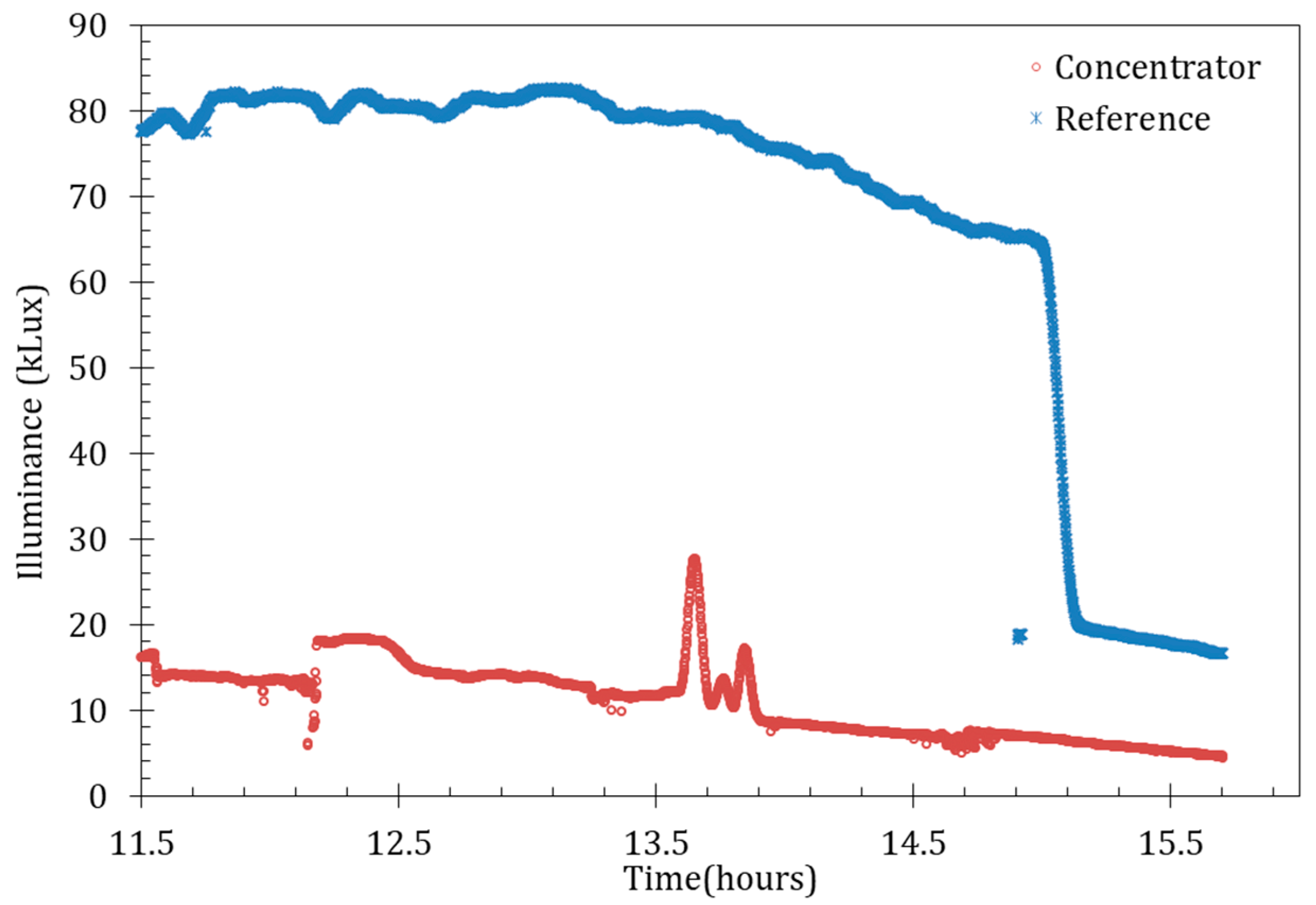
| Cg (×) | ηo (%) | (-) | |
|---|---|---|---|
| DIW | 12 | 76.14 | 0.05 |
| IPA | 12 | 80.18 | 0.22 |
| Voc (V) | Jsc (mA/cm2) | FF (%) | η (%) | γ (%/°C) |
|---|---|---|---|---|
| 0.662 | 40.11 | 79.85 | 21.1 | −0.375 |
Disclaimer/Publisher’s Note: The statements, opinions and data contained in all publications are solely those of the individual author(s) and contributor(s) and not of MDPI and/or the editor(s). MDPI and/or the editor(s) disclaim responsibility for any injury to people or property resulting from any ideas, methods, instructions or products referred to in the content. |
© 2024 by the authors. Licensee MDPI, Basel, Switzerland. This article is an open access article distributed under the terms and conditions of the Creative Commons Attribution (CC BY) license (https://creativecommons.org/licenses/by/4.0/).
Share and Cite
Riverola, A.; Chemisana, D.; Moreno, Á.; Lamnatou, C.; Solans, A. Fabrication and Performance Evaluation of a Directly Immersed Photovoltaic-Thermal Concentrator for Building Integration. Appl. Sci. 2024, 14, 9086. https://doi.org/10.3390/app14199086
Riverola A, Chemisana D, Moreno Á, Lamnatou C, Solans A. Fabrication and Performance Evaluation of a Directly Immersed Photovoltaic-Thermal Concentrator for Building Integration. Applied Sciences. 2024; 14(19):9086. https://doi.org/10.3390/app14199086
Chicago/Turabian StyleRiverola, Alberto, Daniel Chemisana, Álex Moreno, Chrysovalantou Lamnatou, and Alejandro Solans. 2024. "Fabrication and Performance Evaluation of a Directly Immersed Photovoltaic-Thermal Concentrator for Building Integration" Applied Sciences 14, no. 19: 9086. https://doi.org/10.3390/app14199086







